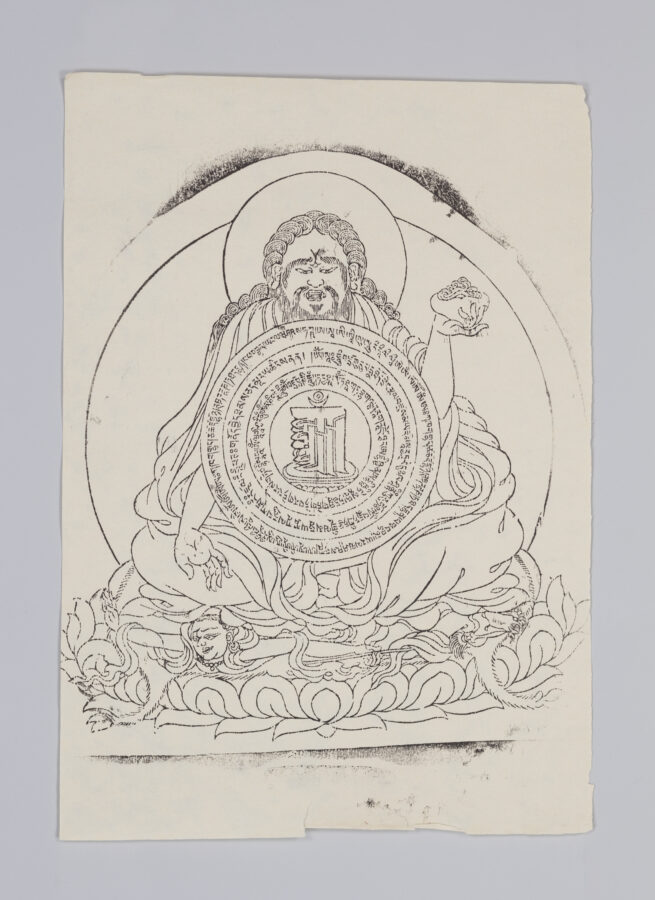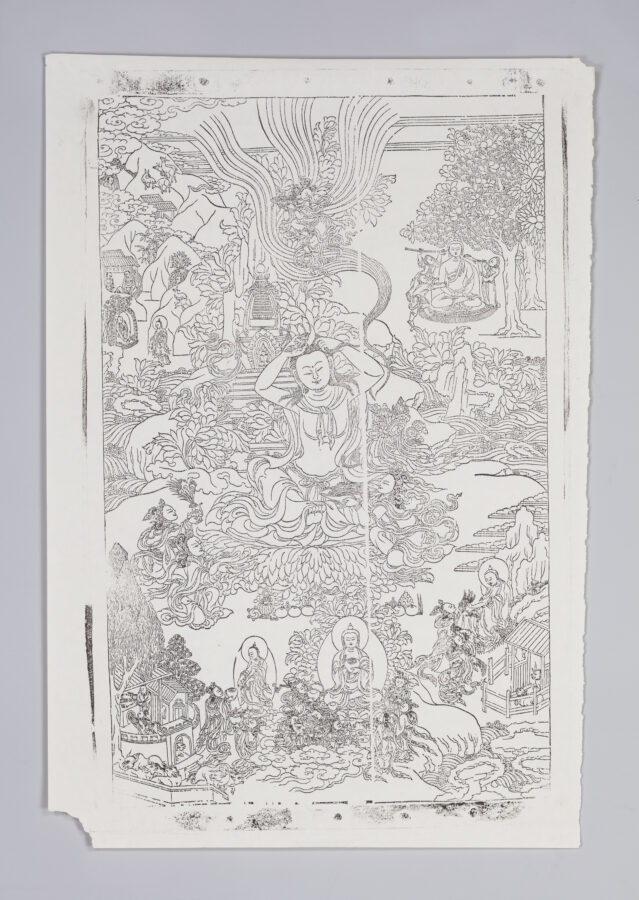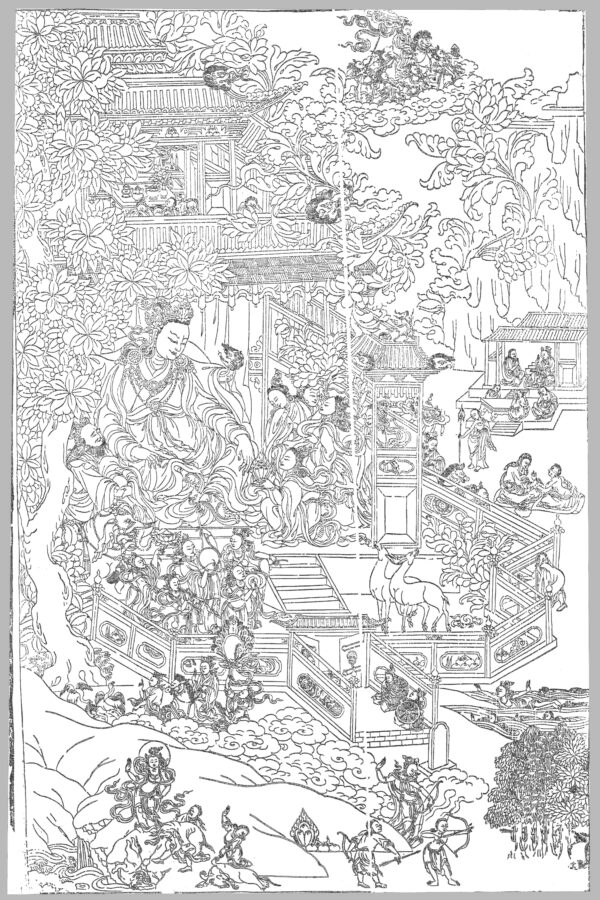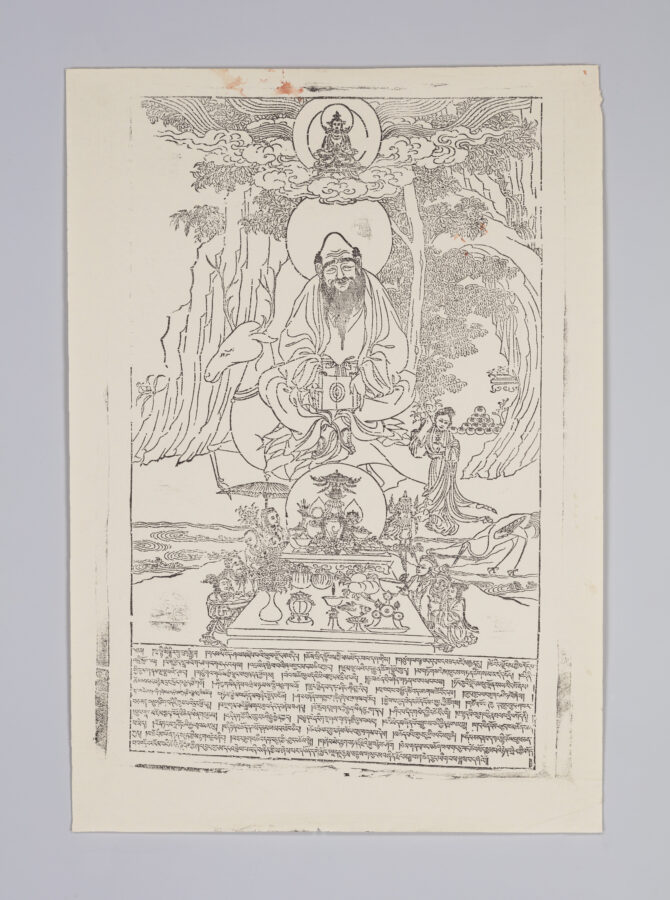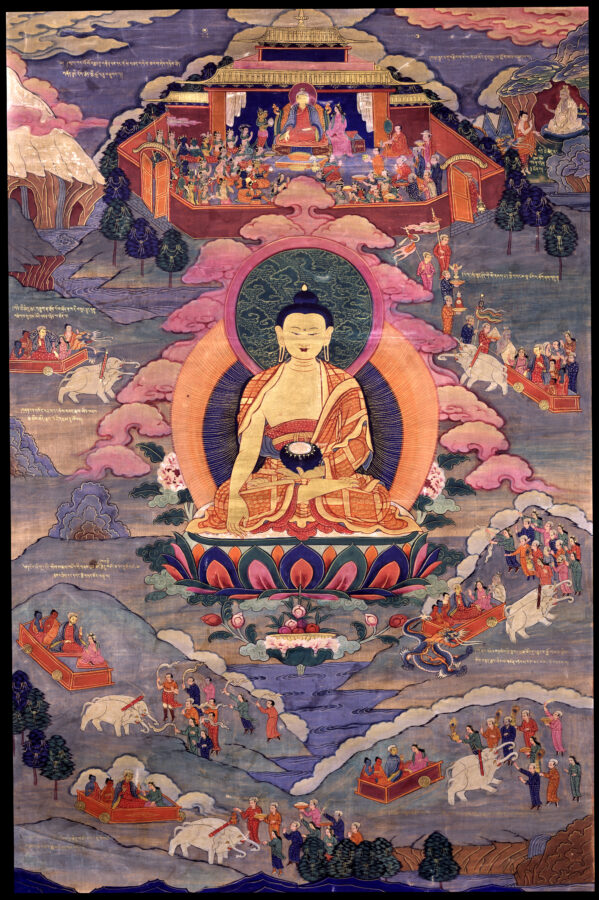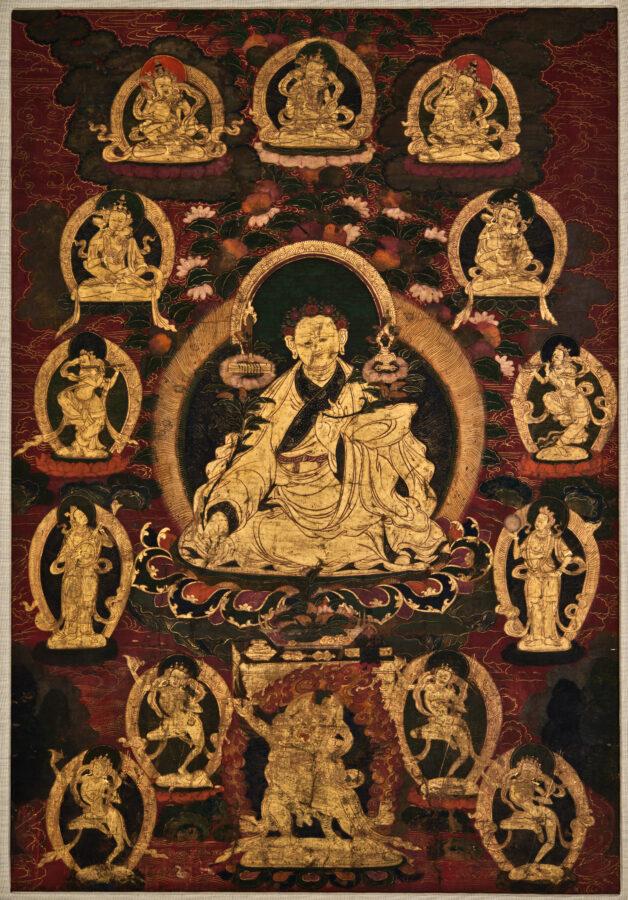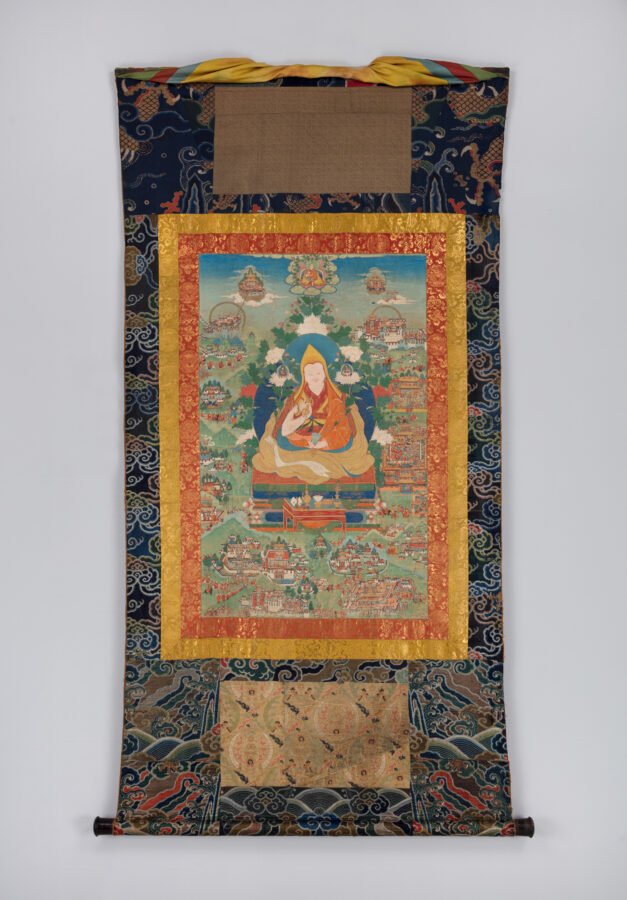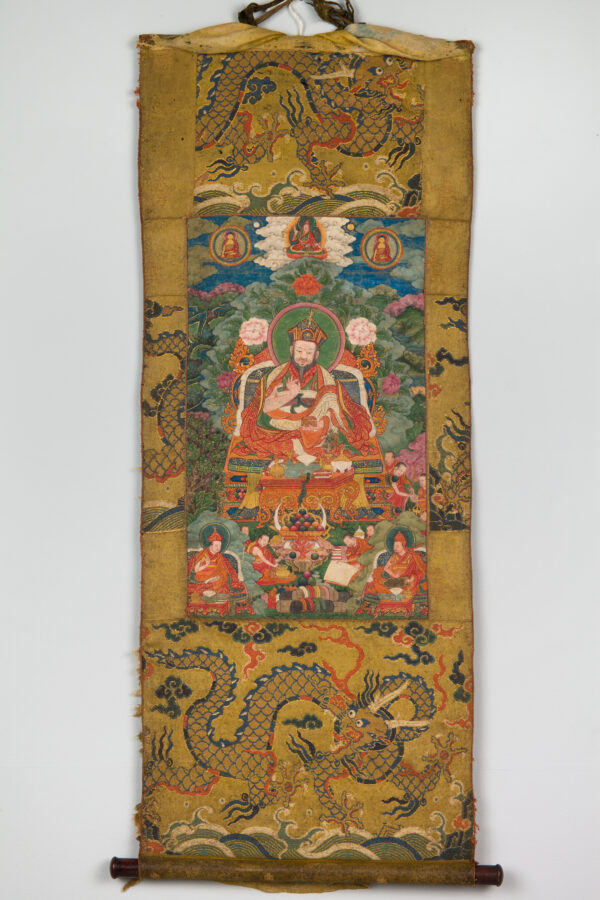Lhathok, Kham Province, Eastern Tibet
18th - 19th century
A bell is often paired with the vajra and is another implement used in tantric practices and an attribute of tantric masters and deities. It generally symbolizes wisdom, the feminine aspect of enlightenment, and its ring is said to be the sound of emptiness.







